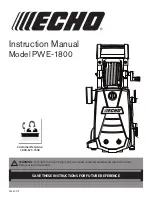
17
EN
During cooking
• When steam escapes through the operating
valve continuously, and a regular hissing
sound (PSCHHHT) is heard, reduce the heat
source.
• Set a timer for the cooking time stated in your
recipe.
• During cooking, check that the valve murmurs
regularly. If there is not enough steam, in-
crease the heat source slightly; if there is too
much steam, reduce the heat source.
End of cooking
To release the steam:
• After the heat has been turned off you have two
alternatives:
- Slow pressure release:
• Gradually turn the operating valve
(A)
adjusting
the speed at which you want to release the pres-
sure until it stops at
. Make sure that the cooker
is positioned so that the steam is directed away
from you.
• When the pressure indicator
(E)
drops again,
your pressure cooker is no longer under pressure.
This method is used for stews, vegetables, meat
joints and fish dishes. If you notice any food or li-
quid start to spray out from the valve when you
are releasing steam, set the selector to cooking po-
sition
then wait a minute and then gradually
turn the operating valve again, making sure that
nothing else spurts out.
- Fast pressure release:
• Place your pressure cooker in a sink under cold
running water, directing the flow onto the metal
part of the lid
- fig. 13
.
• When the pressure indicator
(E)
drops again,
your pressure cooker is no longer under pressure.
The pressure indicator
(E) prevents you from
opening the pressure
cooker if it is still under
pressure.
If the pressure indicator
(E) does not drop, place
the base of your
pressure cooker into a
sink filled with cold
water - fig. 13.
Never interfere with the
pressure indicator.
The pressure indicator
(E) prevents the pressure
cooker from increasing
in pressure if it is not
properly closed.
As with any cooking ap-
pliance, watch over it
carefully especially if you
are using your pressure
cooker around children.
Steam is very hot as it
exits the steam release
outlet.
If food or liquid starts
to spray out while you
are releasing the steam,
return the operating
valve (A) to cooking po-
sition
then release
the steam using the
fast pressure release
method described
opposite.
















































